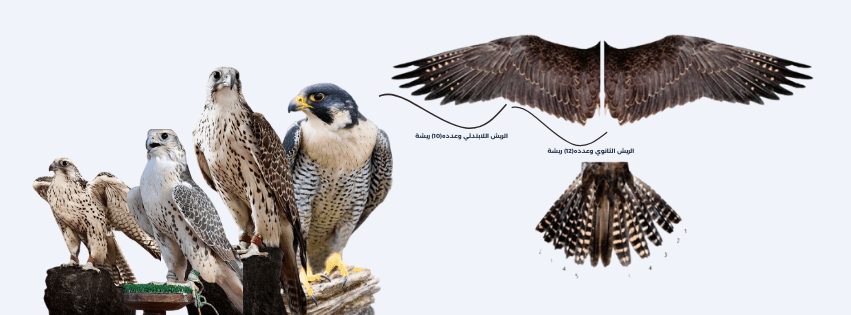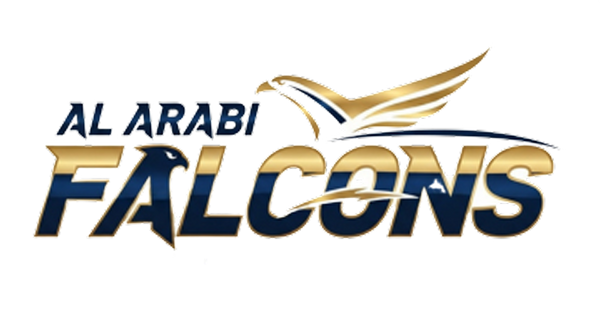
Feather shedding
Share
Almqd is a periodic annual process starting from March and ending at the end of September, during which the falcon replaces the old feather by subtracting (deleted) to grow replaced by new feathers, and as it is known, the falcon wing consists of (22) feathers, including (10) feathers called primary and located on the outer side of the wing and (12) feathers called secondary and located on the inner side of the wing, As for the tail, it consists of (12) feathers only.
The falcon begins to put up (delete) only one feather from the primary feathers of both wings, starting from the middle of the wing and towards its outer end, and when the growth of the new feather reaches the middle at the very least, it begins to put the next feather and this is in order for the falcon to remain able to hunt and fly, and this process continues successively until the last feather at the tip of the wing.
The period of deletion and growth of one feather takes approximately (3-8) weeks depending on the length of the feather, for example, the growth of the tenth feather (mousse) completely takes approximately (8) weeks because it is the longest feather in the wing, and this period (3-8) weeks for small and medium-sized falcons (peregrine , free, lime, and other species) The large falcons, eagles and eagles take several years to finish replacing their feathers completely.
There are other factors in addition to the type of falcon that affect the period it takes for falcons to replace their feathers, including: the quality and health of the food provided to the falcon, the length of the falcon's exposure to lighting, the intensity of lighting, temperature, the effect of hormones, the stress that the falcon is exposed to during the period of bartering, the falcon's exposure to diseases such as parasites (worms), some drugs that delay the period of replacing feathers.
It is important to manage the barter rooms in an orderly manner by monitoring the health of falcons periodically with the provision of different types of healthy balanced food in addition to giving vitamins and amino acids and must secure the appropriate environment for falcons, which is to provide heat, lighting and good humidity in addition to calm and not expose the falcon to any stress, as the problems that the falcon is exposed to during the barter season will be reflected on the quality of the new feathers and thus on the ability and ability of the falcon to fly during the next hunting season.
It is necessary to examine falcons before they are admitted to the barter chambers and after completing the barter period to ensure their safety and that they do not have any diseases that may affect both the barter process and their ability to fly and hunt.
It is no secret to everyone that the period of barter is of great importance for the falcon and falconer, as the process of changing feathers is a complete maintenance of the falcon's feathers, so taking care and attention to falcons well during this period and maintaining that they are not exposed to any pathological injuries, nutritional problems or stress is important in the process of replacing feathers and the growth of new integrated and good feathers without any delay, Among the most important problems and disorders that falcons are exposed to during the period of barter:
- The use of medications: Some of them lead to a defect and disorder in both the process of replacing (deleting) old feathers and the growth of new feathers, and these drugs include marbosil, some anthelmintics, and others.
- The use of drugs containing thyroid hormones: Some may go to use these types of drugs to speed up the process of switching feathers, but their use in double quantities and for long periods may lead to many problems such as irregular feather exchange process, and this can be seen in the second season of the feather, especially in peregrine falcons, where falcons begin to delete more than one feather at the same time and irregularly and in both wings and the growth of poor-quality feathers and change color to become whiter or It has a weak structure with a non-straight blade and an imbalance in the level of hormones that leads to disruption in the digestion process, as well as weakness or loss of appetite for food, severe weight loss, and heart palpitations.
